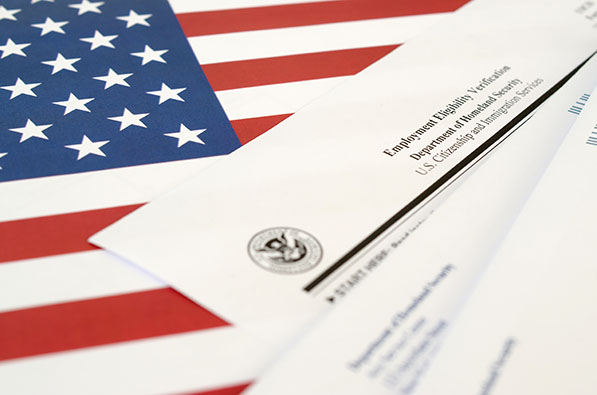Employers are responsible for verifying the employment eligibility of new employees before they are hired. For this purpose, they are required to verify the name, address, and social security number of new hires by completing an I-9 form. They are also required to retain these documents for a specified period of time after the employee stops working for the company.
Documents to be reviewed
If you are an employer, you must complete Form I-9 within three business days after an employee begins working for you. The employer must also retain the form for the duration of employment. Upon completion, the employee should be provided with a copy of the completed form and any documents they may have presented to prove their eligibility to work in the United States.
When completing Section 2 of the Form I-9, the employer must ensure the employee has submitted two acceptable documents. Employees may be required to present additional documents, and the list of acceptable documents is not exhaustive. However, the employer may express preferences for certain documents. Regardless of what the employee presents, the documents must be unexpired.
In addition to the Form I-9, employers should ensure that other forms necessary for work in the United States are in order. This includes visas, work permits, and other forms of legal documentation. Employers should also maintain employment records for at least seven years.
Documents that are not acceptable
If you are in the business of hiring employees, you must conduct I-9 employment verification before they begin working for you. This ensures that you are only hiring employees who are authorized to work in the United States. It is important to understand the requirements for this process.
For new hires, the I-9 form must be completed within three days after the hire. Employees must also provide documentation to prove their identity. In the event that an employee does not provide the necessary documents, they are not allowed to return to work until they can present acceptable documents.
Employers must verify the identity of job candidates through the presentation of original, unexpired documents. Documents that are considered acceptable include Social Security cards, a DS-2019 (Employment Authorization Document) issued by the U.S. Department of State, a certificate of birth from the U.S. Department of Health and Human Services, and other documentation establishing an individual’s identity and work authorization.
Requirements for employers
The Immigration Reform and Control Act of 1986 requires employers to only hire workers who are authorized to work in the U.S. As a result, employers are required to properly complete the I-9 employment verification form. If they do not, they may be subject to fines and criminal penalties.
Employers must complete the form within three business days of the employee’s start date. They must then verify each document presented by the employee. Once the document is verified, they must attest that the document appears to be authentic. This means that the document is related to the employee and that it was produced in the presence of an authorized representative.
Employees who are not US citizens need to provide two forms of work authorization, including a US driver’s license or a US Passport. Non-US citizens may need to present a resident ID card or a US birth certificate.
Employers should be prepared to physically examine the documents presented by employees. If an employer suspects that an employee is unauthorized to work, they may suspend or terminate the employee.
Documents to be retained for a specified time after an employee stops working for the company
When an employee leaves a company, records that are related to the employment must be stored for a specified period of time. The timeframe varies from state to state and from federal law to local laws. However, the majority of employers keep personnel files for seven years after the termination date.
During that time, former employees must be able to request copies of the file. It must also be available for inspection by authorized officials. If the employer fails to comply, they may face stiff penalties.
Documents that must be retained for a certain period of time after an employee leaves include payroll and personnel records. Those must be retained for two to three years, and must meet requirements in wage and hour laws, anti-discrimination statutes, and FMLA. Records regarding benefits enrollment must be kept for one year, and for five years if the employer has employees who work in hazardous locations.
A “security file” is an investigative document. This information includes memoranda about theft and loss, or documents relating to misconduct. These files must be maintained separately and can’t be used to determine an employee’s eligibility for employment, promotion, or adverse personnel action.
